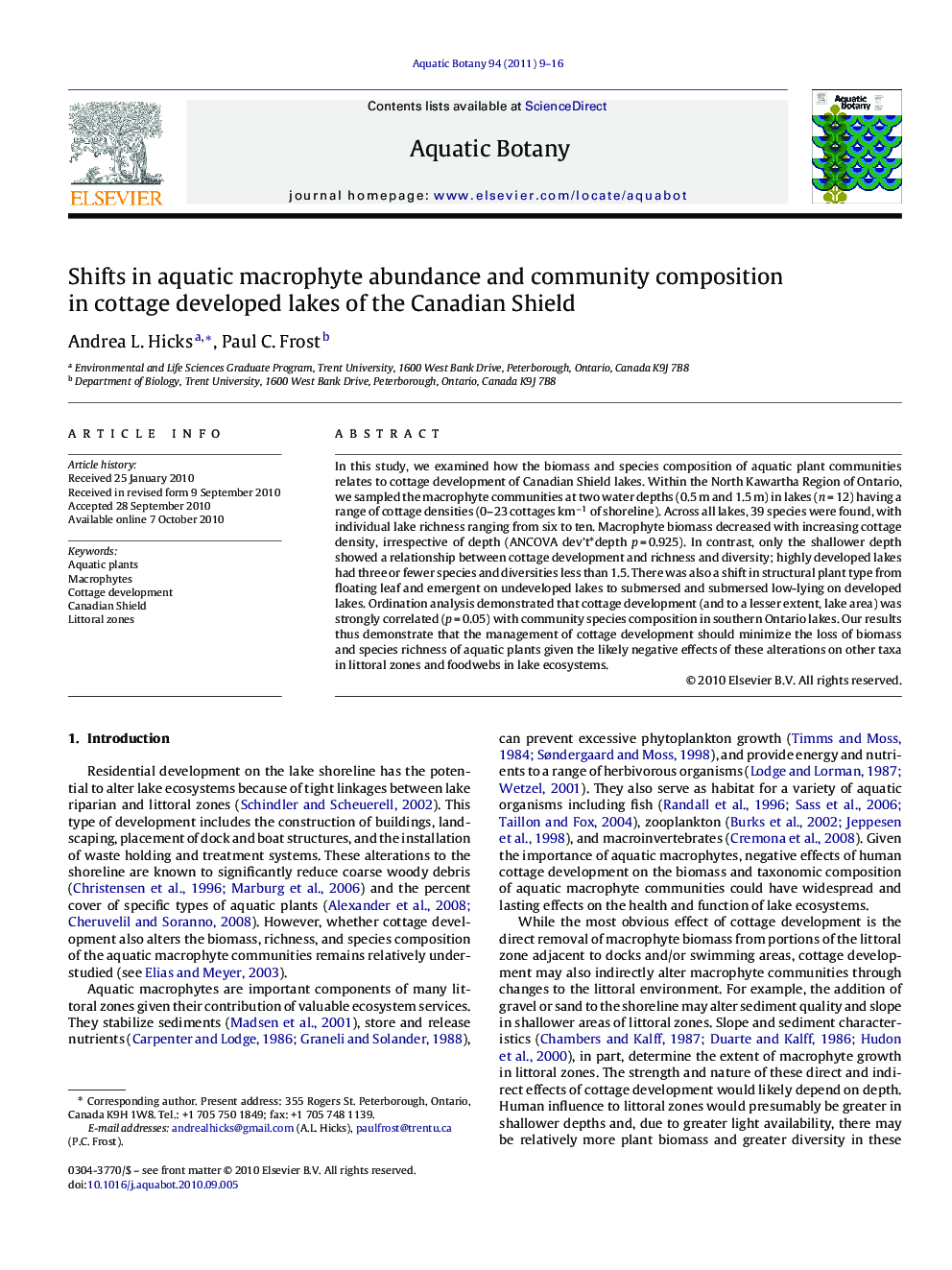| Article ID | Journal | Published Year | Pages | File Type |
|---|---|---|---|---|
| 4528178 | Aquatic Botany | 2011 | 8 Pages |
In this study, we examined how the biomass and species composition of aquatic plant communities relates to cottage development of Canadian Shield lakes. Within the North Kawartha Region of Ontario, we sampled the macrophyte communities at two water depths (0.5 m and 1.5 m) in lakes (n = 12) having a range of cottage densities (0–23 cottages km−1 of shoreline). Across all lakes, 39 species were found, with individual lake richness ranging from six to ten. Macrophyte biomass decreased with increasing cottage density, irrespective of depth (ANCOVA dev’t*depth p = 0.925). In contrast, only the shallower depth showed a relationship between cottage development and richness and diversity; highly developed lakes had three or fewer species and diversities less than 1.5. There was also a shift in structural plant type from floating leaf and emergent on undeveloped lakes to submersed and submersed low-lying on developed lakes. Ordination analysis demonstrated that cottage development (and to a lesser extent, lake area) was strongly correlated (p = 0.05) with community species composition in southern Ontario lakes. Our results thus demonstrate that the management of cottage development should minimize the loss of biomass and species richness of aquatic plants given the likely negative effects of these alterations on other taxa in littoral zones and foodwebs in lake ecosystems.
